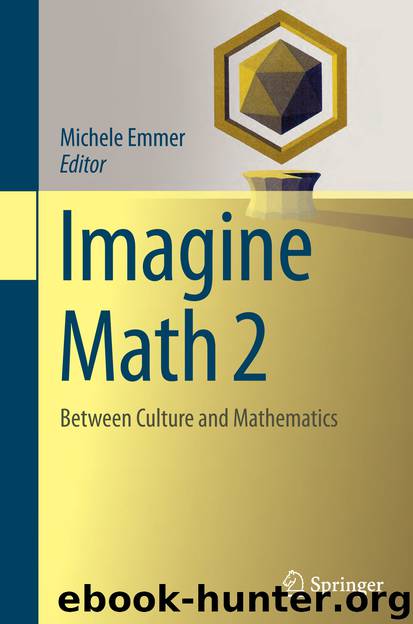Imagine Math 2 by Michele Emmer

Author:Michele Emmer
Language: eng
Format: epub
Publisher: Springer Milan, Milano
The hypothesis that the world is a computing device has at least two intellectual antecedents. The first is the long-standing tradition in philosophy and in science that conceives the world as a machine, such as a clockwork mechanism [1]. The second antecedent is the view that the function and value of laws of nature are to give a concise summary of the results of observations and measurements. Ernst Mach was one of the founders of this view: expressions such as Snell’s law of refraction were, he said, “rules for the reconstruction of great numbers of facts” [2, p. 582]. Writing at the beginning of the computer age, Ray J. Solomonoff similarly conceived laws of nature as algorithms capable of generating empirical data: “The laws of science that have been discovered can be viewed as summaries of large amounts of empirical data about the universe. In the present context, each such law can be transformed into a method of compactly coding the empirical data that gave rise to the law.” [3, pp. 16–17]. The view that laws of nature constituted a compression of empirical data sets motivated Solomonoff’s contribution to algorithmic information theory, to which we shall return below.
Building in part on these approaches, several thinkers since the 1960s have suggested that the world is a computing device of some kind. They have conjectured that programs or algorithms running on this device create the numerical values of all physical parameters, including those that make up our perceptual experience and those that we gather in observations and measurements in science. In consequence, the evolution of the universe is a digital information process analogous to that which takes place in a computing device.
There are two main conjectures about the nature of the computing device. Some writers, like Jürgen Schmidhuber, have suggested that the world is a universal Turing machine [4]. Laws of nature of the traditional form could play the role of the programs running on such a machine, since laws are mathematical equations that generate the values of dependent variables from those of independent variables. Laws of nature would then amount to “the software of the universe”, in the phrase of Mauro Dorato [5, pp. 36–44]. Other advocates of the hypothesis that the world is a computing device, however, have had in mind a more specific device: a cellular automaton. Konrad Zuse and Edward Fredkin have endorsed the view that the best explanation of all phenomena in the universe is that they are produced by cellular automata [6, 7]. In this case, laws of nature of the traditional form would be less fundamental descriptions of nature: the deep description of the world would require principles of a new form, as Stephen Wolfram has proposed [8]. These principles would be approximately as concise as the laws of nature with which we are familiar. Regardless of the precise form of the device postulated, thus, the hypothesis that the world is a computing device is an attempt to derive the great complexity of observable physical phenomena from highly simple rules [9, 10].
Download
This site does not store any files on its server. We only index and link to content provided by other sites. Please contact the content providers to delete copyright contents if any and email us, we'll remove relevant links or contents immediately.
Kathy Andrews Collection by Kathy Andrews(11730)
The remains of the day by Kazuo Ishiguro(8821)
Paper Towns by Green John(5089)
Spare by Prince Harry The Duke of Sussex(5072)
Industrial Automation from Scratch: A hands-on guide to using sensors, actuators, PLCs, HMIs, and SCADA to automate industrial processes by Olushola Akande(4979)
The Body: A Guide for Occupants by Bill Bryson(4974)
Machine Learning at Scale with H2O by Gregory Keys | David Whiting(4179)
Be in a Treehouse by Pete Nelson(3947)
Never by Ken Follett(3790)
Harry Potter and the Goblet Of Fire by J.K. Rowling(3774)
Goodbye Paradise(3727)
Into Thin Air by Jon Krakauer(3312)
The Remains of the Day by Kazuo Ishiguro(3293)
The Cellar by Natasha Preston(3261)
The Genius of Japanese Carpentry by Azby Brown(3224)
Fairy Tale by Stephen King(3220)
120 Days of Sodom by Marquis de Sade(3180)
The Man Who Died Twice by Richard Osman(2997)
Drawing Shortcuts: Developing Quick Drawing Skills Using Today's Technology by Leggitt Jim(2996)
